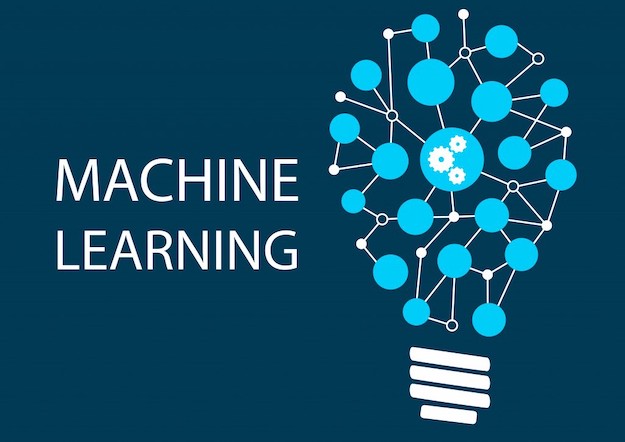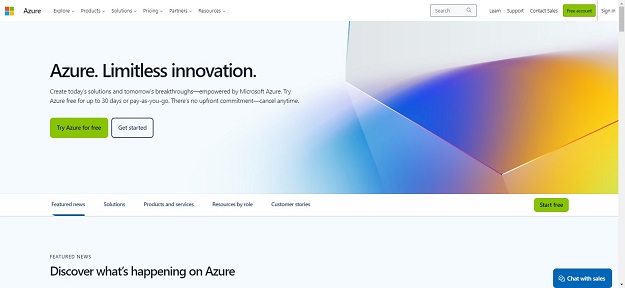Machine Learning Practitioners Need Tools To Build, Train, and Deploy Machine Learning Models Quickly. Every year, a new generation of machine-learning technologies is developed to make this process easier and faster. In this post, we will discuss power of machine learning and then compare the machine learning tools to help you choose the right one for your project.
Microsoft Azure Machine Learning
What is Machine Learning in Microsoft Azure?
Machine Learning in Microsoft Azure is a cloud-based, fully managed service designed to help data scientists and development teams build, deploy, and manage machine learning lifecycles more quickly and confidently.
What’s more, the platform aims to speed up time to value (MTV) with its MLOps, open-source integration, and built-in tools, as well as being built with responsible AI and a strong focus on security.
Key Features
Data preparation: Enable developers to quickly and easily scale data preparation on Apache Spark clusters and connect to Azure Databricks.
Notebooks: Jupyter Notebook or Visual Studio Code can be used by developers to collaborate.
Drag-and-drop Machine Learning: Users can utilize Designer, an intuitive drag-and-drop interface, to construct machine learning pipelines.
Responsible AI: With ethical AI, developers can conduct in-depth analysis of their models and track them in production to make sure the best is always available to end-users.
Amazon SageMaker
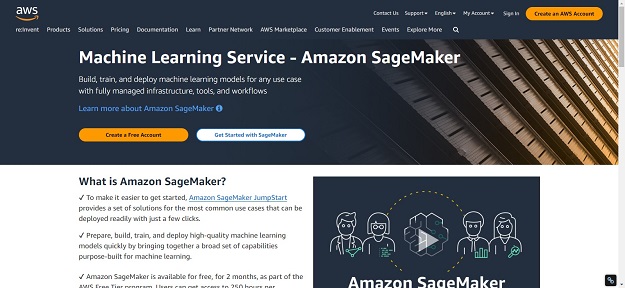
Amazon SageMaker is an all-in-one, fully managed service for creating machine learning models and making predictions. With the platform, developers can build, train, and deploy machine learning models on a large scale in a unified IDE using a wide range of tools including notebooks, debuggers profilers pipelines MLOps, and many more.
In addition, SageMaker supports governance requirements by providing easy-to-use access controls and transparency across your machine-learning workflow.
Key Features
Canvas: A no-code interface that you can use to build machine learning models. According to the product page, you don’t need to be a machine learner or have any programming knowledge to build your models using Canvas.
Data Wrangler: can be used to quickly collect and organize data in the form of tables or images for machine learning.
Experiments: A managed service that allows you to monitor and evaluate your machine-learning efforts on a large scale.
BigML
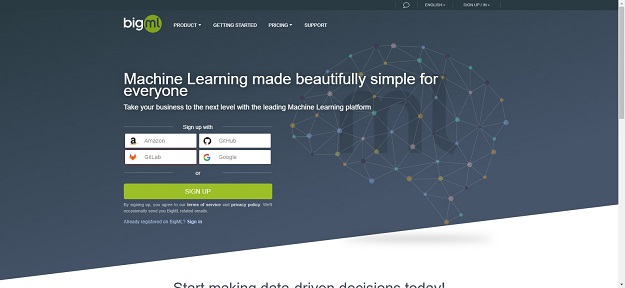
BigML is an open-source, plug-and-play, modular, and extensible machine learning platform. In 2011/12, it was designed to make it easier to build, deploy, and manage machine learning tasks such as classifying, regressing, predicting time series, analyzing clusters, modeling topics, and more.
The platform provides a wide range of services, including data preparation, data visualization, model development, and many more that work in tandem to help businesses and organizations create and implement machine learning models with minimal technical knowledge.
Key Features
Comprehensive Machine Learning Platform: A wide range of problems can be addressed, spanning from supervised to unsupervised learning.
Interpretable: All predictive models have visualization and explainability capabilities that make them easy to understand.
PyTorch
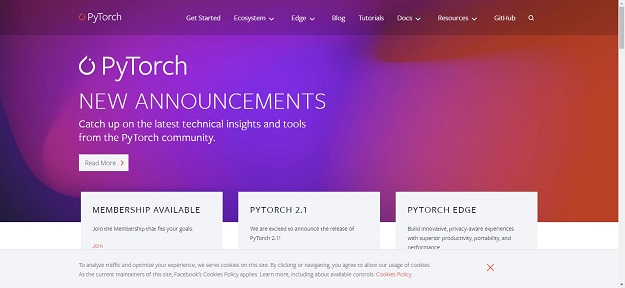
PyTorch is a tensor library for CPUs and GPUs that is open-source and optimized for deep-learning models.
Key Features
Distributed Training: Using PyTorch’s asynchronous execution support for collective operations and P2P communication, developers can improve their research and production performance.
TorchScript: Generate serializable and scalable models directly from the PyTorch source code, so it is always ready for production.
TorchServe: This makes it easy to deploy PyTorch models on a large scale.
Apache Mahout
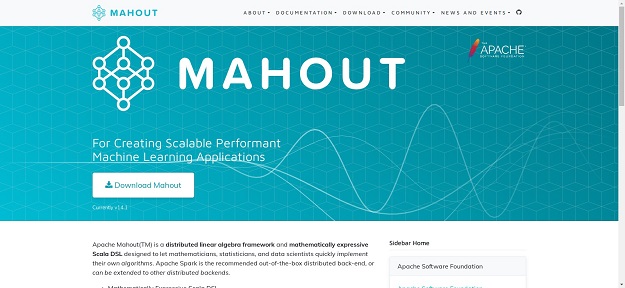
Apache Mahout, also known as Mahout, is a distributed linear algebra framework that is open-source. Mahout is a mathematically expansive Scala Domain-Specific Language (DSL) that was created by the open-source software development company, the Apache Software Foundation (ASF).
The framework is built on top of Apache Hadoop and was created to help statisticians, computational scientists, and data scientists quickly build large-scale, high-performance machine learning algorithms.
Key Features
Proven Algorithms: Mahout uses best-in-class algorithms to solve common issues across industries.
Scalable to Large Datasets: The framework was created for distributed use across large data centers running on the open-source platform, Apache Hadoop.
Weka
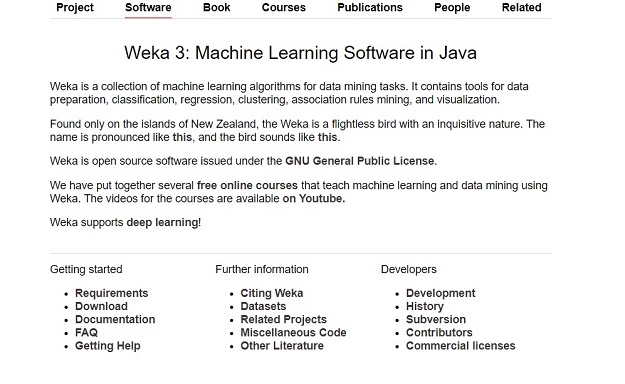
Weka is a set of machine learning algorithms developed by New Zealand’s Waikato University for data mining. The platform includes data preparation tools, visualization tools, classification tools, regression tools, clustering tools, association rules mining tools, and more. Weka helps organizations store, process, and manage their data on-prem and in the cloud.
Key Features
Multi-protocol Support: NVIDIA GPUDirect Storage Native Support, POSIX Support, NFS Support, SMB Support, S3 Support.
Cloud-native, Datacenter Ready: Shift between on-premise, cloud, and burst deployments.
Vertex AI
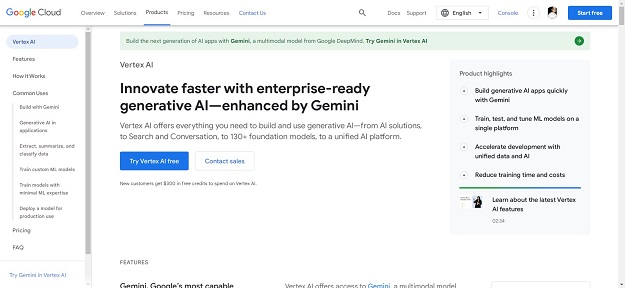
What is Verex AI? Verex is a Google-owned, fully managed, and fully integrated machine learning platform. It lets you train and deploy ML models and applications, and customize big language models that you can use in your AI-powered apps. The platform unifies data engineer, data scientist, and machine learning engineer workflows allowing teams to work together using a single platform.
Key Features
AutoML: Train Machine Learning algorithms on Tables, Images, or Videos. No coding is required. No data splits are required.
Generative AI Models and Tools: Generative AI models can be quickly prototyped, customized, integrated, and deployed across your AI applications.
TensorFlow
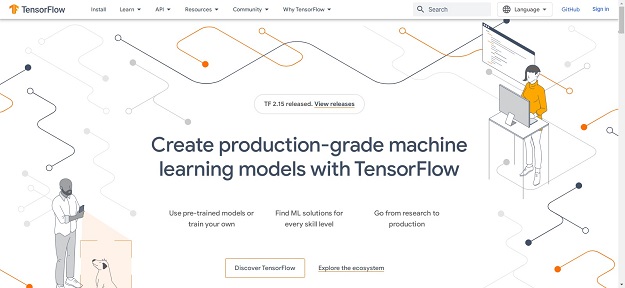
What is TensorFlow? TensorFlow, also known as TensorFlow, is an open-source, cross-platform machine learning framework created by Google Brain. While TensorFlow focuses primarily on training and inference, many tools, libraries, and frameworks can be linked together, such as TensorFlow Serving, which allows users to create, train, and deploy ML models.
These resources also contain solutions for natural language processing (NLP), computer vision (CV), reinforcement learning (REML), predictive machine learning (PML), and more.
Key Features
Distributed Computing: With distributed computing, TensorFlow allows developers to run their models on multiple computers.
GPU and TPU Support: GPU and TPU acceleration can also speed up training.
TensorBoard: Visualize your models with a visualization tool.
Choosing the Right Machine Learning Tool
The most important thing to think about when selecting a tool is your needs, for example:
# What am I trying to do?
# What are the constraints?
# What level of customization do I need?
Not all tools are created equal. TensorFlow, for instance, was created by Google Brain scientists to advance key machine learning domains and advance deep learning theoretical knowledge. PyTorch, on the other hand, was designed to be flexible and fast while deep learning models are being built.
This is one of the most common problems in machine learning, which is why it’s important to know what you’re trying to accomplish and then choose machine learning tools to make it as easy as possible.
Bottom Line
Tools are essential for all types of craftspeople, including ML practitioners. ML professionals often use them to quickly create, train, and implement machine learning models. These tools are primarily used to accelerate the development of machine learning models and move them from research to production.

